Hello, stargazers and photography enthusiasts! This week, we’re in for a celestial treat as there is a high probability that the Northern Lights, also known as the Aurora Borealis, will be visible in 17 northern U.S. states on Thursday. This is a rare opportunity for many of us, and Cloud Break Optics is here to ensure you’re well-equipped to enjoy and capture this cosmic spectacle.
The Northern Lights are a natural light display caused by solar winds interacting with Earth’s magnetic field. This week, thanks to a solar storm, states as far south as Indiana might get a glimpse of this ethereal phenomenon. The best viewing times are between 10 p.m. and 2 a.m. local time, so prepare for a late-night adventure under the stars.
Now, let’s talk about the best ways to view and photograph the Northern Lights.
**Viewing the Northern Lights**
For optimal viewing, you’ll want to find a location with minimal light pollution. This could be a local park, a field, or even your backyard if you’re far enough from city lights. The Northern Lights will be visible in the northern parts of Indiana and potentially low on the horizon in Indianapolis.
While aurora is best viewed with the naked eye, why not bring a good pair of binoculars to scan the night sky while you are waiting for the lights show to begin? We like the Celestron SkyMaster Pro 15x70 Binoculars for their wide field of view and multi-coated optics, perfect for astronomical viewing, but there are lots of other good options.
**Photographing the Northern Lights**
Astrophotography is a fantastic way to capture the beauty of the Northern Lights. Here are some tools you’ll need:
- **Camera**: A DSLR or mirrorless camera with manual settings is ideal. You’ll need to adjust your ISO, aperture, and shutter speed to capture the lights effectively. Try an ISO of 1600 or 3200 and the lowest aperture setting available on your lens. You can experiment with exposure time, try starting with 5 or 10 seconds.
- **Lens**: A wide-angle lens with a fast aperture (f/2.8 or lower) is recommended. This allows more light into your camera, capturing more detail of the lights.
- **Tripod**: A sturdy tripod is essential to keep your camera steady during long exposures.
- **Remote Shutter Release**: This helps to avoid camera shake when pressing the shutter button.
Remember, patience is key when it comes to viewing and photographing the Northern Lights, because even if aurora is forecast, it doesn’t always happen. So, grab your gear, a hot drink, and get ready to, fingers crossed, witness one of nature’s most awe-inspiring shows.
And who knows? With the right equipment and a bit of luck, you might just capture a shot that’s truly “out of this world”!
Stay curious, stay starry-eyed, and as always, keep looking up!
Your friends at Cloud Break Optics.
Aurora prediction and resources:
Geophysical Institute - University of Alaska Fairbanks
NOAA Space Weather Prediction Center - Experimental Dashboard

